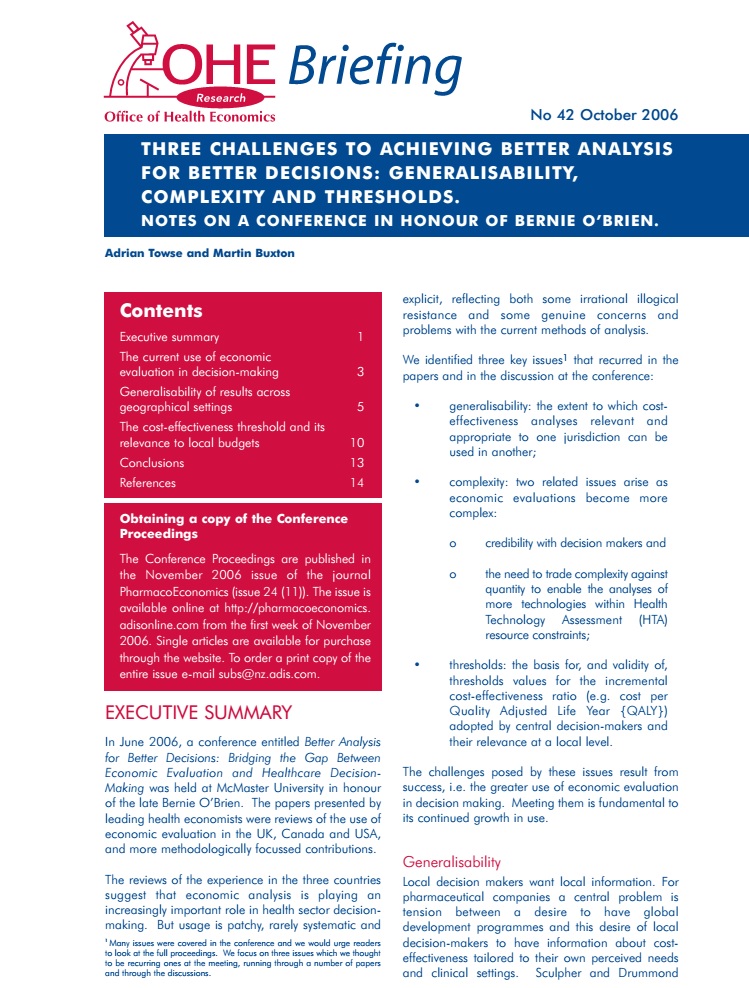Unlocking the Value of Combination Therapies

In June 2006, a conference entitled Better Analysis for Better Decisions: Bridging the Gap Between Economic Evaluation and Healthcare Decision-Making was held at McMaster University in honour of the late Bernie O’Brien. The papers presented by leading health economists were reviews of the…
In June 2006, a conference entitled Better Analysis for Better Decisions: Bridging the Gap Between Economic Evaluation and Healthcare Decision-Making was held at McMaster University in honour of the late Bernie O’Brien. The papers presented by leading health economists were reviews of the use of economic evaluation in the UK, Canada and USA, and more methodologically focused contributions.
The reviews of the experience in the three countries suggest that economic analysis is playing an increasingly important role in health sector decision making.
But usage is patchy, rarely systematic and explicit, reflecting both some irrational illogical resistance and some genuine concerns and problems with the current methods of analysis.
We identified three key issues1 that recurred in the papers and in the discussion at the conference:
• generalisability: the extent to which cost-effectiveness analyses relevant and appropriate to one jurisdiction can be used in another;
• complexity: two related issues arise as economic evaluations become more complex:
• thresholds: the basis for, and validity of, thresholds values for the incremental cost-effectiveness ratio (e.g. cost per Quality Adjusted Life Year {QALY}) adopted by central decision-makers and their relevance at a local level.
The challenges posed by these issues result from success, i.e. the greater use of economic evaluation in decision making. Meeting them is fundamental to its continued growth in use.
Three Challenges to Achieving Better Analysis for Better Decisions: Generalisability, Complexity and Thresholds
Towse, A. and Buxton, M.
(2006) Three Challenges to Achieving Better Analysis for Better Decisions: Generalisability, Complexity and Thresholds. OHE Briefing. Available from https://www.ohe.org/publications/three-challenges-achieving-better-analysis-better-decisions-generalisability-complexity/